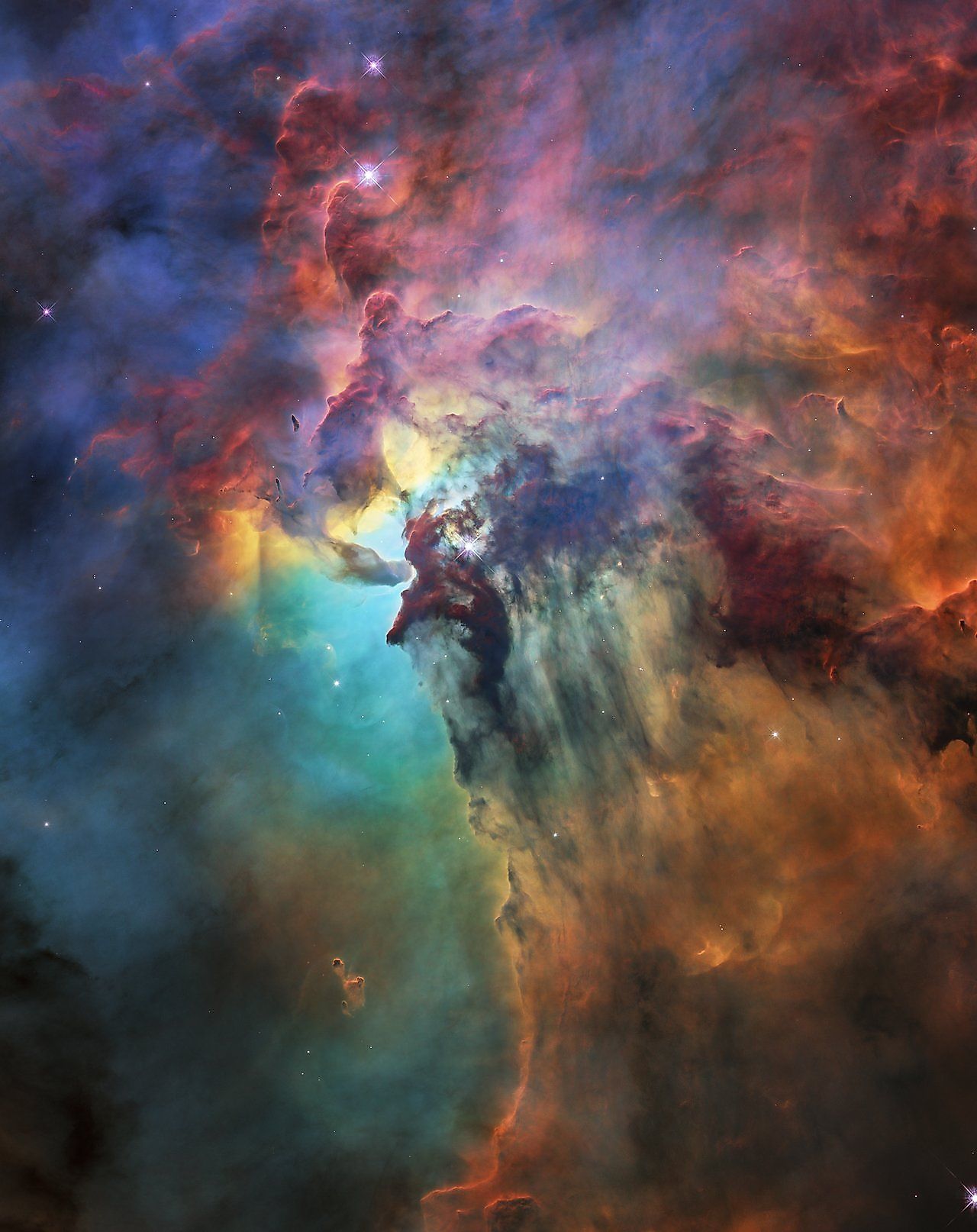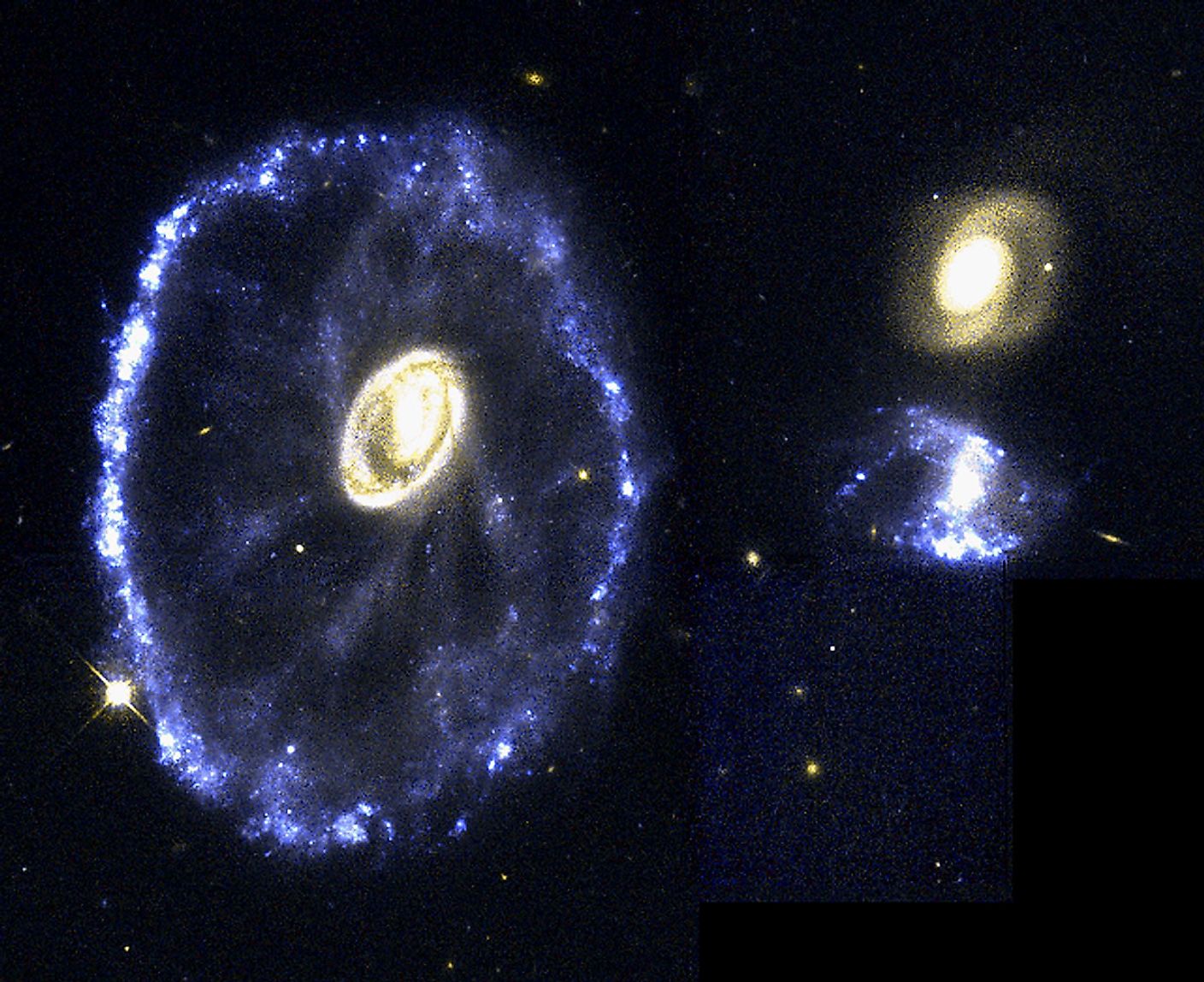
The Cartwheel Galaxy
The universe is home to hundreds of billions of individual galaxies. Among the vast number of galaxies, some stand out due to their peculiar appearance. One of the most stunning, yet also strangest, galaxies known is the Cartwheel Galaxy. The Cartwheel Galaxy was a popular target for the Hubble Space Telescope, and recently, it became a target for the James Webb Space Telescope, which has provided the highest resolution images of the Cartwheel Galaxy to date. What type of galaxy is the Cartwheel Galaxy and why does it look so strange?
Galaxy Type
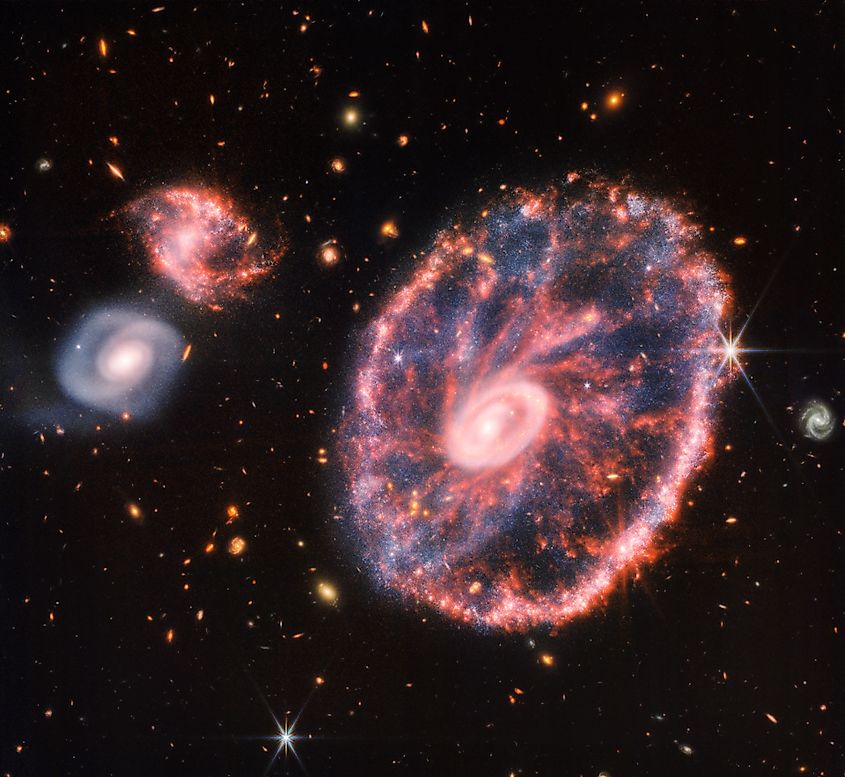
The Cartwheel Galaxy is a variation of spiral galaxy called a ring galaxy. All ring galaxies are believed to have once been spiral galaxies, yet their shape was distorted by a galactic collision. The type of galactic collision that forms a ring galaxy is a fairly peculiar one. Rather than two or more galaxies passing through each other at random points, a ring galaxy forms when a smaller galaxy passes directly through its center. This “bullseye” type collision sends gravitational shockwaves through the larger galaxy, pushing material outwards, similar to how a rock thrown in water sends ripples outwards. In the case of the Cartwheel Galaxy, it is believed to have been impacted by one of its smaller companion galaxies around 300-million years ago.
Distance, Size, And Mass
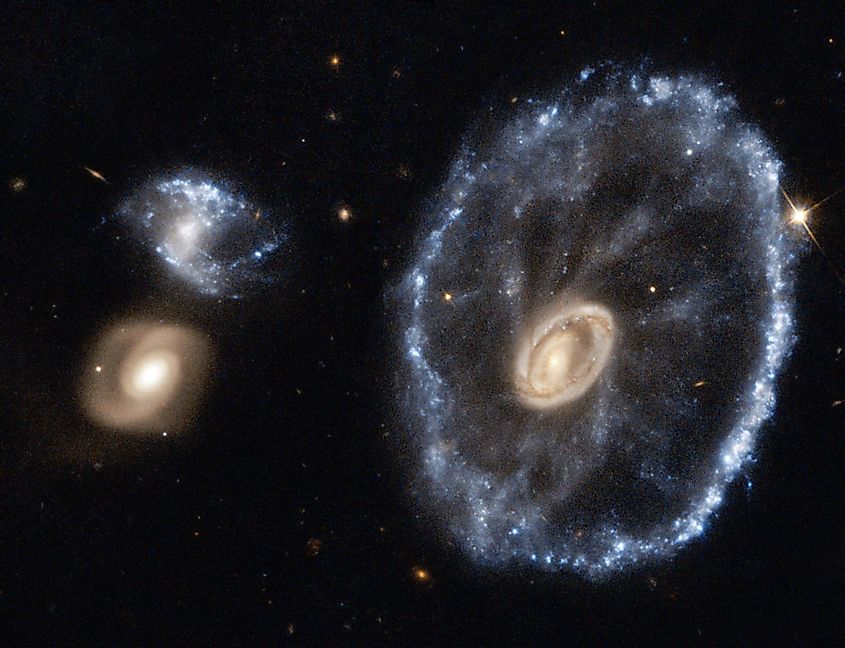
The Cartwheel Galaxy is larger than the Milky Way yet smaller than the Andromeda Galaxy. Estimates place its diameter around 150,000 light years across. For comparison, the Milky Way has a diameter of 100,000 light years and Andromeda has a diameter of around 200,000 light years. Estimates of how far away the Cartwheel Galaxy is from the Milky Way place it around 500-million light years away, meaning we are currently seeing this galaxy as it was 500-million years ago. Interestingly, although the Cartwheel Galaxy is larger than the Milky Way, its mass is significantly smaller. The Cartwheel Galaxy has a mass of around 3.5 billion suns, while the Milky Way has a mass of 1.5 trillion suns. The reason for this discrepancy is due to the fact that the Cartwheel Galaxy was likely much smaller at one point, yet the collision that pushed material outwards increased its overall size.
Starburst Galaxy
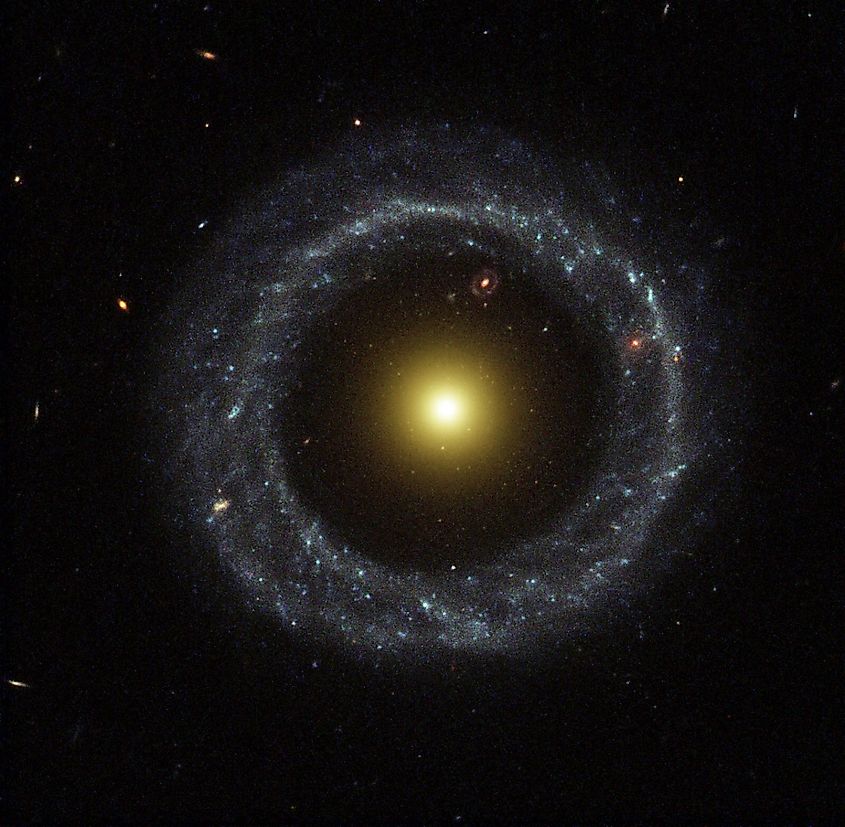
The collision experienced by the Cartwheel Galaxy has caused the galaxy to experience a tremendously high rate of star formation. The Cartwheel Galaxy is currently going through what’s called a starburst phase, wherein star formation is occurring at a higher rate than usual. The starburst phase is a common occurrence among galactic collisions. When two galaxies pass through one another, gravitational tidal forces cause gas and dust within the galaxies to heat up and clump together, leading to a massive wave of star formation.
